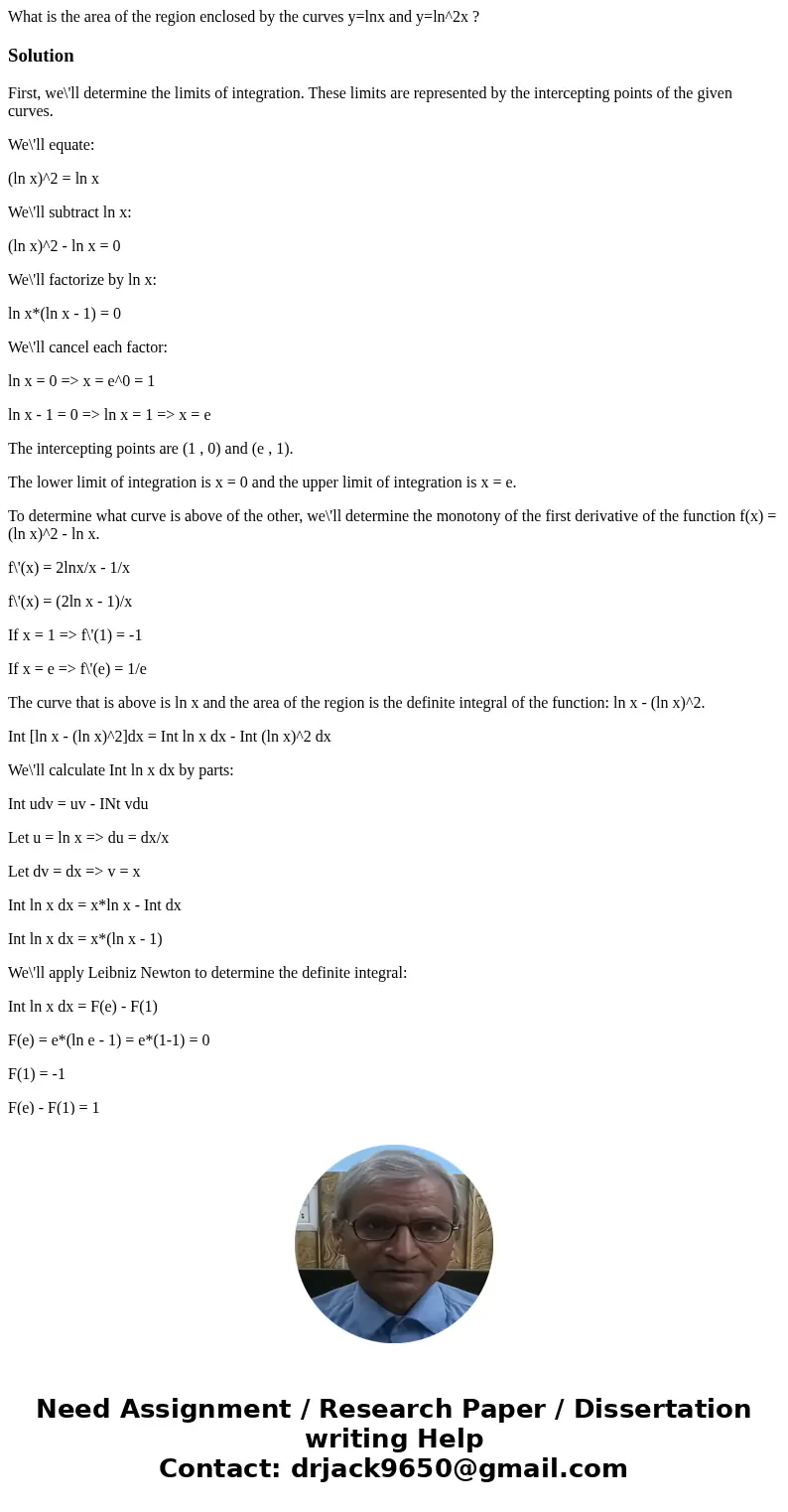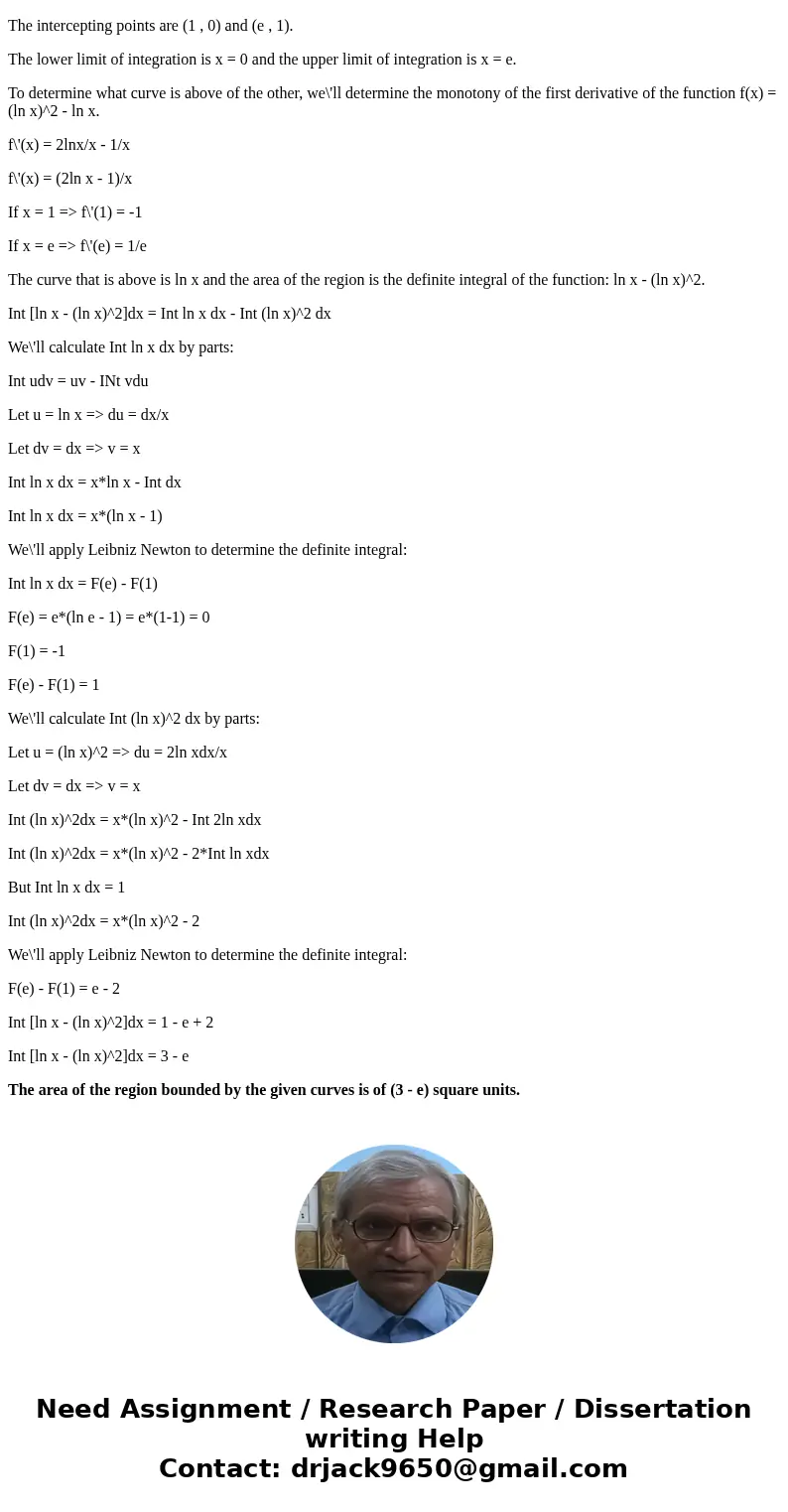What is the area of the region enclosed by the curves ylnx a
What is the area of the region enclosed by the curves y=lnx and y=ln^2x ?
Solution
First, we\'ll determine the limits of integration. These limits are represented by the intercepting points of the given curves.
We\'ll equate:
(ln x)^2 = ln x
We\'ll subtract ln x:
(ln x)^2 - ln x = 0
We\'ll factorize by ln x:
ln x*(ln x - 1) = 0
We\'ll cancel each factor:
ln x = 0 => x = e^0 = 1
ln x - 1 = 0 => ln x = 1 => x = e
The intercepting points are (1 , 0) and (e , 1).
The lower limit of integration is x = 0 and the upper limit of integration is x = e.
To determine what curve is above of the other, we\'ll determine the monotony of the first derivative of the function f(x) = (ln x)^2 - ln x.
f\'(x) = 2lnx/x - 1/x
f\'(x) = (2ln x - 1)/x
If x = 1 => f\'(1) = -1
If x = e => f\'(e) = 1/e
The curve that is above is ln x and the area of the region is the definite integral of the function: ln x - (ln x)^2.
Int [ln x - (ln x)^2]dx = Int ln x dx - Int (ln x)^2 dx
We\'ll calculate Int ln x dx by parts:
Int udv = uv - INt vdu
Let u = ln x => du = dx/x
Let dv = dx => v = x
Int ln x dx = x*ln x - Int dx
Int ln x dx = x*(ln x - 1)
We\'ll apply Leibniz Newton to determine the definite integral:
Int ln x dx = F(e) - F(1)
F(e) = e*(ln e - 1) = e*(1-1) = 0
F(1) = -1
F(e) - F(1) = 1
We\'ll calculate Int (ln x)^2 dx by parts:
Let u = (ln x)^2 => du = 2ln xdx/x
Let dv = dx => v = x
Int (ln x)^2dx = x*(ln x)^2 - Int 2ln xdx
Int (ln x)^2dx = x*(ln x)^2 - 2*Int ln xdx
But Int ln x dx = 1
Int (ln x)^2dx = x*(ln x)^2 - 2
We\'ll apply Leibniz Newton to determine the definite integral:
F(e) - F(1) = e - 2
Int [ln x - (ln x)^2]dx = 1 - e + 2
Int [ln x - (ln x)^2]dx = 3 - e
The area of the region bounded by the given curves is of (3 - e) square units.


 Homework Sourse
Homework Sourse